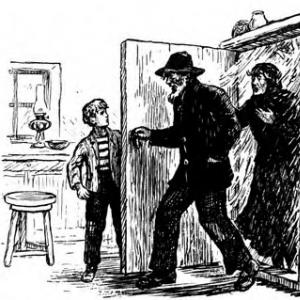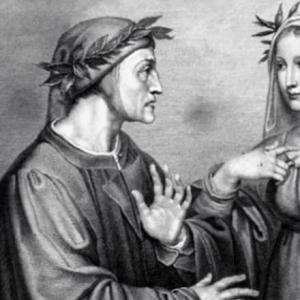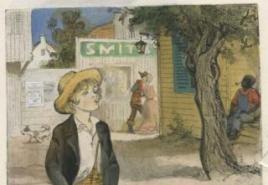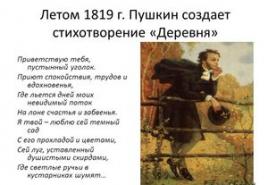How and why France combined around the king. Presentation on the topic "France: a long way to unity" The Board of Louis VI
\ Documents \ For teacher historyWhen using materials of this site - And the placement of banner -Article !!!
Development of a history lesson on the topic: "France: a long way to unity"
Olga Likhacheva
The purpose of the lesson:
Bring to understand the reasons for the unification of France; ensure the assimilation of the concepts of "centralized state", "General States";
Continue the formation of skills to study writing historical sources, removing from them new knowledge, find the necessary objects on the historic map;
Formation of respect for the historical past of France;
New concepts: "40 days of the king", general states, estate monarchy, domain.
Equipment: Workbook, textbook, map number 45 "Europe during crusades".
I. Ateral control of knowledge and skills:
Exercise 1: Position the listed representatives of the estates on the feudal staircase. (1Uh)

Task 2. Fill the "Meeting" scheme. (1 Oh.)
Individually 2 cards. (see Appendix 1)
Concepts express - survey. (Explain the content of concepts)
A) feud, feudal society, natural economy, heresy, indulgence, crusades,
Inquisition, estate, list the estate
B) in 1099 a very important event occurred when the split of the Christian Church took place; Why did the changes at the fairs appeared; What denotes the saying "that with the Warred fell, it was gone"; What a craft separated from.
II. Studying a new material
Plan:
1. How and why France united around the king.
2. Easter way to the celebration of capeting.
3. Louis IX Holy.
4. Philip IV beautiful
5. General states.
1. Transition to the study of a new topic.
So, we remembered that there were important changes in the history of the Western and Central European countries: the craft separated from agriculture, the city of trade was growing ... But in France there was a process of formation of a centralized state.
Teacher's story.
In the XI century, France was a fragmented state, but by the XII century. She managed to achieve the first success in uniting the country. Combine the country It meant to make the king power throughout the country as strong as in the royal domain. And for this it was necessary to break the bonds of feudal connections and attach the former aems to the domain. (to define a domain) to achieve this could be in several ways.
The task: What ways the king could increase his domain? (independent work with a textbook)
Work with a map. To talk about the advantage of the royal domain in front of the lands of the feudal.
Work with miniature on p.149. - "Coronation of Philip II August."
The task:Consider a miniature on page 148 and 149 and answer questions: who performed the anointing of the king? How was the rite?
Talk about the anointing of the king to the kingdom.
Scheme Terms of strengthening the royal power and association of the country.
(Uch-Xia is recorded in the notebook)

Working with the source.
The class is divided into 4 groups, each group task over the source text. The task in 1 and 3 groups will be the same, as well as in 2 and 4. Each group will give a sheet with a task on which they should write an answer. Then ask on the question 1 group, and then ask: "Lee 3 agree with such a response" (they must justify their answer)

Question: Do you think why Louis IX nickname "Holy"?
5. General States In France, the Higher Cost Representative Institution in 1302-1789, which had the character of the deliberative body. The general states convened a king into the critical moments of French history and had to provide royal free support of society. In his classic form, French general states consisted of three chambers: representatives of the nobility, clergy and the third, applied class. Each class fell in general states separately and endowed a special opinion on the issue under discussion. Most often, general states approved decisions on tax collection.
Cast monarchy - in which the estates are actively involved in managing through their representatives

Each class fell in general states separately and endowed a special opinion on the issue under discussion. Most often, general states approved decisions on tax collection.
Question: What do you think if the issue of raising the tax on Earth would be the question of raising the general states would approve it?
In the interests of what class did general states acted?
III. Fastening learned in class.
1. Collect the scheme "Conditions for strengthening power and association of the country"
2. Three rows to divide three estates. One person from a row will go to the blackboard and spread under the scheme of general state under his chamber representatives of its estates. (Mixed cards must be selected)
Homework: p.16. Message about Henry Plantagenet.
1. How and why France combined around the king. 1. What legitimate capabilities have a French king to increase his domain at the expense of the feots of his vassals? The possibilities of the king increase the domain in what ways the king can attach the feces of vassals to their domain? 1. To marry the heir of the feud 2. Hold a feud from his Vassal (if he agrees) 1. Inherit the feud from his Vassal, if he died without heirs 2. To make a feud near Vassal by force in case of non-fulfillment of vassal obligations to select the feud power if the owner is convicted Church and deprived of the knightly title and all feuds for violation of Christian rules or as a heretic

What were the advantages of the king in the fight against major feudal feud? The advantages of the king in front of large feudalities The advantages of the king compared to large feudal feudresses first, the Royal Domain of Il de France is small, but is well located: in the center of the country, at the intersection of land and river tract (and hay, and Loire); Here is the most important city of Paris Secondly, thanks to the root of coronation, the king was considered anointed anointed in God's rivalry of large feudalists with each other interferes with their association against the king; The king can use their struggle in his own interests.



2. Cappeting policy in the XII - early XIV centuries. Louis Vi Tolstie () 1 Louis VII () 2 Philip II August () 3 Louis VIII () 4 led to the obedience of revolving vassals, both in his domain and beyond, mainly in the northern regions of France next to their domain. Armed with the encroachment of secular seenors on the property of the church. Circled the fortress, stormed the castles as a result of marriage on Allenor attached to the Aquitaine domain, but after the divorce lost it. Almost did not increase the domain, but managed to preserve the positions of cappeps in the conditions of a sharp strengthening of plantagenets taking advantage of the fact that the English king did not fulfill his vassal obligations for French possessions, made him conviction by the trial of peers and force attached huge territories to the domain: Normandia, Land on Lower Loire, Thus, sharply weakened the main rivals of plantagenets. Paris strengthened him, he applied his new wall as a result of Albigo wars County Toulouse in the south of France


Louis IX Saint created the highest judicial authority Paris Parliament of Country 2. Forban off the war between feudalities in the Royal Domain 3. The rule "40 days" delaying the war between feudalities on non-aligned lands 4. Entered the monetary system for the whole country contributed to the further process of the country's association

4. Victory and defeat of Philip IV Beautiful GG .. 1. Domain the Kingdom of Navaror and Champagne 2. The vassal dependence on France of the Duchy of Aquitaine 3. Called the first general states (1302) 4. Bened in the confrontation of the Roman dad, putting the beginning Period of the Avignon Prial of Dad 1. The defeat in the struggle for Flanders 2. Remedily in the money: eliminated the Order of the Templars, carries its riches; 3. He expelled from the kingdom of Jews, confiscated their property; 4. Dried to the spurrant of coins, deserving the nickname "King-fake" 5. Now looking at it, left a huge public debt after

5. For the general states - 1302 in 1302. Philip IV convened general states to support in the fight against dad. They presented 3 estates: clergy, nobility, citizens. They were seen separately, in their separate ward, and every class had only one voice. Thus, at the beginning of the XIV century, a status monarchy emerged in France, in which the royal power relied on the meeting of representatives of the estates. Session of general states.




- What circumstances contributed to the design of the estate monarchy in France at the beginning of the XIV century?
§ 15.1. How and why France united around the king
In the XI century, France experienced a period of feudal fragmentation. In the XII century of the royal authorities, it was possible to achieve first success in the association of the country. This meant that the king's power should have become durable throughout the country, as in the royal domain. And for this it was necessary to break the bonds of feudal connections and attach the former aems to the domain. It was possible to achieve this in several ways. The king could marry the heir of the feud, could buy him away from his vassal (if he wanted it). In case the King's vassal died, without leaving the heir, his feud also returned to the king. The feud could be selected from Vassal by force if he did not fulfill his vassal obligations. But for this, with the opinion of the king, the peers were to agree - the "equal" anointing of Vassala, and they, fearing the strengthening of power to the kingdom, the king, preferred this not to do. Finally, the feud could be selected from a man who condemned the church.

Anointing to the kingdom. Miniature
Compared with large feudalities, the king had two important advantages. First, his domain, Ile de France, was favorably located in the center of the country, at the intersection of land and river tract. Here was the most important city of the country - Paris. Secondly, thanks to the root of coronation, the king was considered anointed to God.

Coronation of Philip II August. Miniature. Describe the rite of coronation of Philip II August.
The rite of coronation of the French kings, that is, their solemn construction on the throne, was committed in the cathedral of the city of Reims. The famous still from the Old Testament anointing to the kingdom emphasized the king of Divine grace. The head of the French church Archbishop Reimssky with prayers caused the sacred fragrant oil of Miro on the man, hands, chest and back of the king. The king swear to edit fairly and mercifully to protect the world, protect the church. Then the anointed of God crowned the crown, he handed him the signs of royal dignity: Scepter and Rod, symbolizing the justice of the monarch; An approximate king held the sword and knight spurs. From now on, the power of the king became sacred. With this, the distribution of faith in the ability of the kings with one touch of hands is connected with one touch of hands from some diseases.

Palace of the French kings. Miniature. Explain why the Palace of the French kings was built as a fortress.
Whether the king will be able to take advantage of its capabilities or its power will remain sacred, but powerless, depended on the ratio of forces. Unite, large feudals, of course, could impose their will to king. So more than once happened in France, and in other countries. However, as a rule, they competed with each other, and the skillful ruler could use their hostility in his own interests. In addition, the monarch had strong allies, no less interested in strengthening the royal authorities and the association of the country. First, this is part of the vassals of his vassals, that is, small and medium-sized feudalists, who often suffered from the arbitrariness of Senors and who were looking for protection from royal power. Secondly, citizens turned out to be natural and reliable allies of royal authorities. Thirdly, the country's union supported the church, which also suffered from the arbitrariness of Senors.
We study the long way of France to the unity of their lands and territories. After Karl the Great - the period of cappeps, and then the board of Louis VI and Philip II. What problems did the rulers meet in their path?
Beginning of the Board of Cappets
After in the 9th century, the Empire of Charles Great broke into a set of separate lands, the descendants of the emperor left the right to hold a small kingdom, called France. Every year the Carroling Dynasty under Natius Normanov gradually losing the territory of the Kingdom.
In 987, the last ruler of the Caroling dynasty died. Power switched to the new king of Gogo Kapet. At that time, the territory of France was negligible, she consisted of the suburbs of Paris and Orleans. The first capetings managed to significantly expand the territory of the kingdom.
Two century later, France was a powerful kingdom with the center of Il de France. The cause of the fruitful boards of capeting was a wise and thoughtful policy The ruling king also passed the power of his son to his son to stop the possible struggle for the throne, which would have a negative impact on the political and economic state of the state.
The Board of Louis VI
King Louis VI first understood that in order to expand the kingdom, strong support is needed and within the state. He reapded the tradition of appointment to the highest positions of representatives of the aristocracy. Instead, they surrounded himself with loyal and wise leaves from the lower layers of the population.
In 1066, France had a serious enemy in the face of the former Vassal Heinrich I, which, thanks to the favorable marriage and the expansion of his dynasty, became the king of England. At the same time, it became the sole ruler of the historical territories of the French kingdom of Aquitania, Anjou, and Normandy.
It greatly complicated the foreign policy for Louis VI. If the northern regions seemed to be able to win the northern regions, then it was unreasonable to join the military conflict with powerful England.
Philip II Board - Land Reset
When in 1180, Philip II became the king of France, the foreign policy was changed radically. The fifteen-year-old young man showed a very uncharacteristic cunning political calculation for his age.
He concluded a truce with Henrich II and even managed to become the nearest friend of the royal family. Philip has long waited for many years when England has a weak place. And it appeared soon.
In 1199, John Farmless became the king of England. Taking advantage of the softness of John, Philip was able to take away from England Anjou, Normandy and a number of northern land. To join the French crown to the province of Lanegot, the king, with the support of Pope, organized a crusade for these lands under the auspices of the fight against heretics and their sects that were very common there.
Obsess religious fanaticism and immense greed, French troops completely defeated Lanegot. The province of manifestation of France. At the beginning of the XIII century, France, which began his way with a small province, appeared the powerful country and the cultural center of Europe.
"France's lesson" - armed with the encroachment of secular seenors on the property of the Church. France: Long path to unity. The problem of the lesson: Lecturer of the history of Monakov M.V., 10.11.2009. 5. For the general states - 1302. What were the advantages of the king in the fight against major feudals? As a result of Albigo wars, Toulouse county in the south of France.
"Culture of Western Europe" - libraries existed not only by kings and monasteries, but also in noble citizens. Johann Gutenberg. Renaissance, Ital. Association? Nei, or Renessa? NA (Fr. Separate person, carrier of human development. For students, an increasing number of textbooks were required. Humanism and humanists. Francesco Petrarka.
"Thomas Mor" - the first part contains the criticism of modern states. On the day they work only 6 hours, sleep 8 hours. Standardization, erasure of individuality. Buildings are not dirty. From the siphogrants are constantly allowed in the Senate two, and every day different. Utopians willingly cooperate with the aborigines during the device on the mainland of their colonies.
"Medieval knights" - medieval castle, general view. Medieval castle. Castle, front view. The castle was away. Medieval castles. Medieval castle, reproduction. Armor knight. The figure of the knight. Modern castle. Tower of the castle. Evening castle. The life of knights. Knight in armor. Castle, side view. Castle, overall review. Medieval castle when attacking.
"Medieval architecture" - Cathedral of Notre Dame La Grand XII, Poita France. Knights and squires. Feudal property and natural economy have formed a knightly culture. So the legend of Sherwood began. 11-12 centuries. Later, the cycles of the military songs turned into entire poems. The coat of arms of medieval Europe. The name comes from the dynasty founded by the outflow of the Great.
"Hundred Years War" - France Pat and Scotland Castile. French miniature. Century XIV. § 32. The execution of Zhanna D 'ARK. XIV - XV centuries. Magna Carta. Chapter 8 Century Crisis and Updates: § 31. Causes of War: Participants. K a r l Vi. Survey homework. XV century Centenary War 1337 - 1453 (1471). L y d about in and to x.
Total in the subject of 17 presentations







